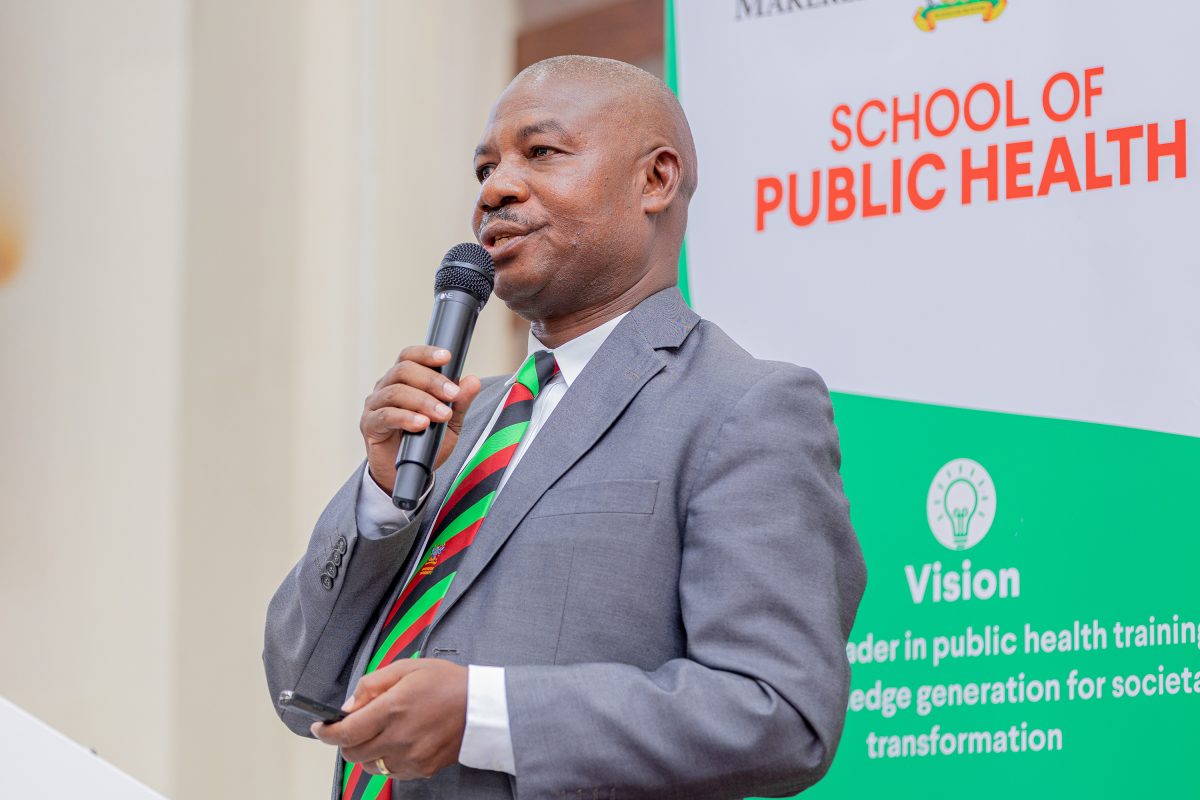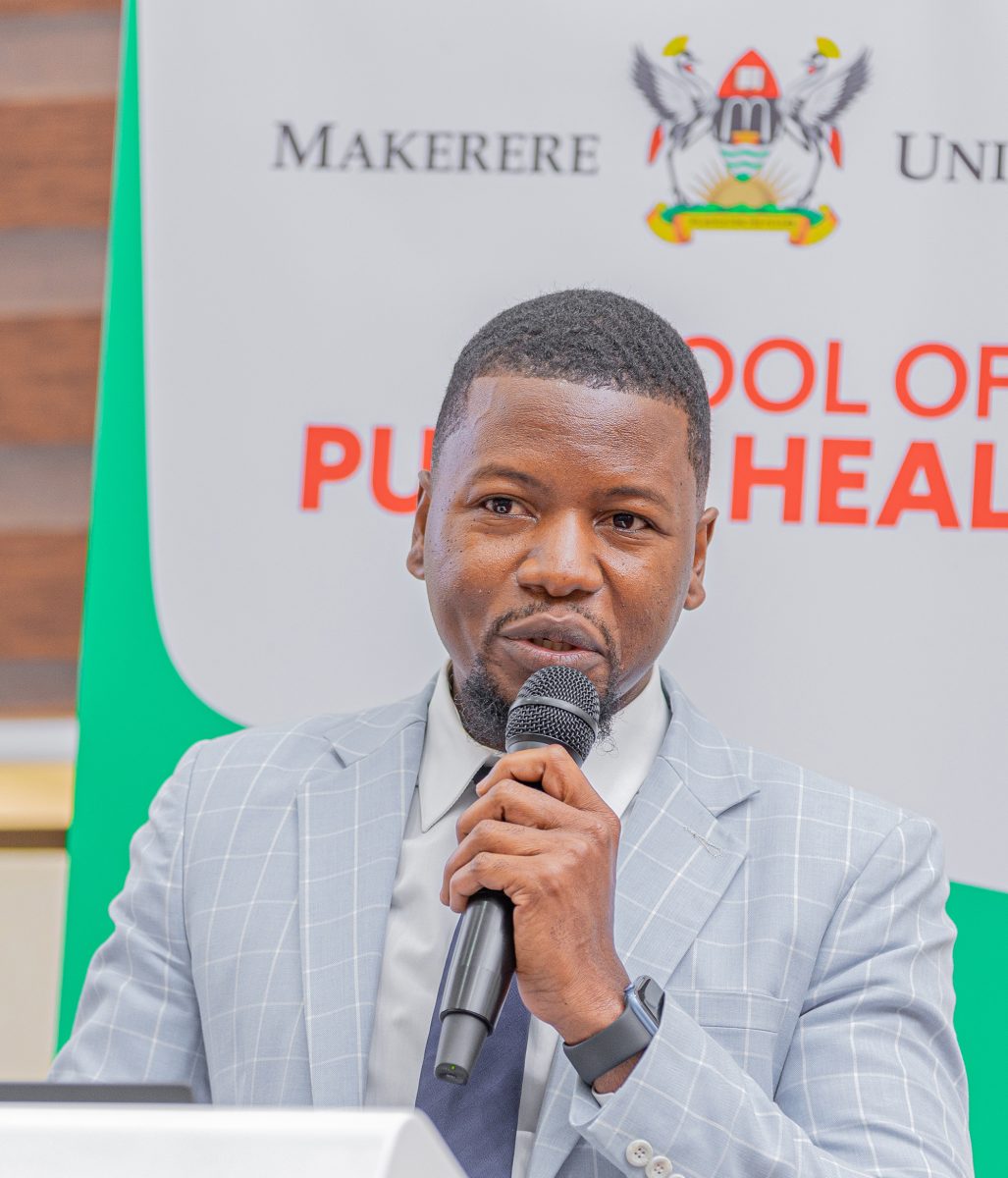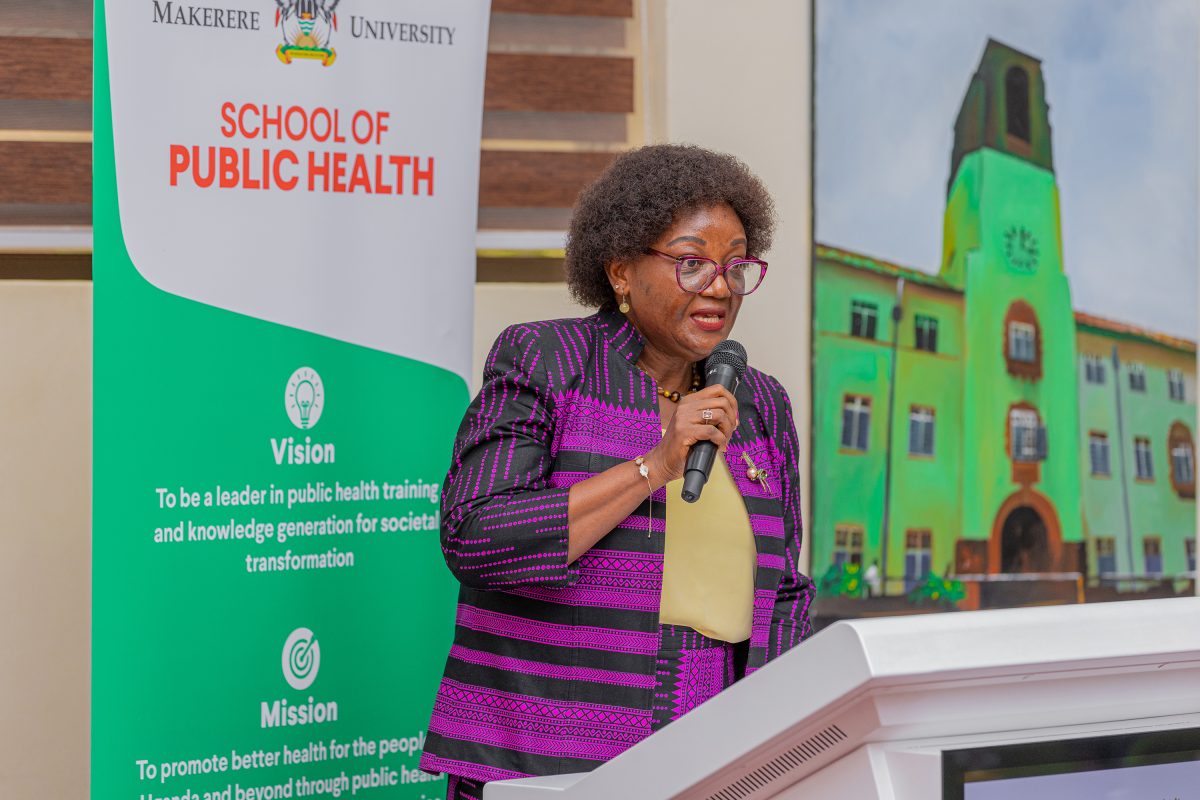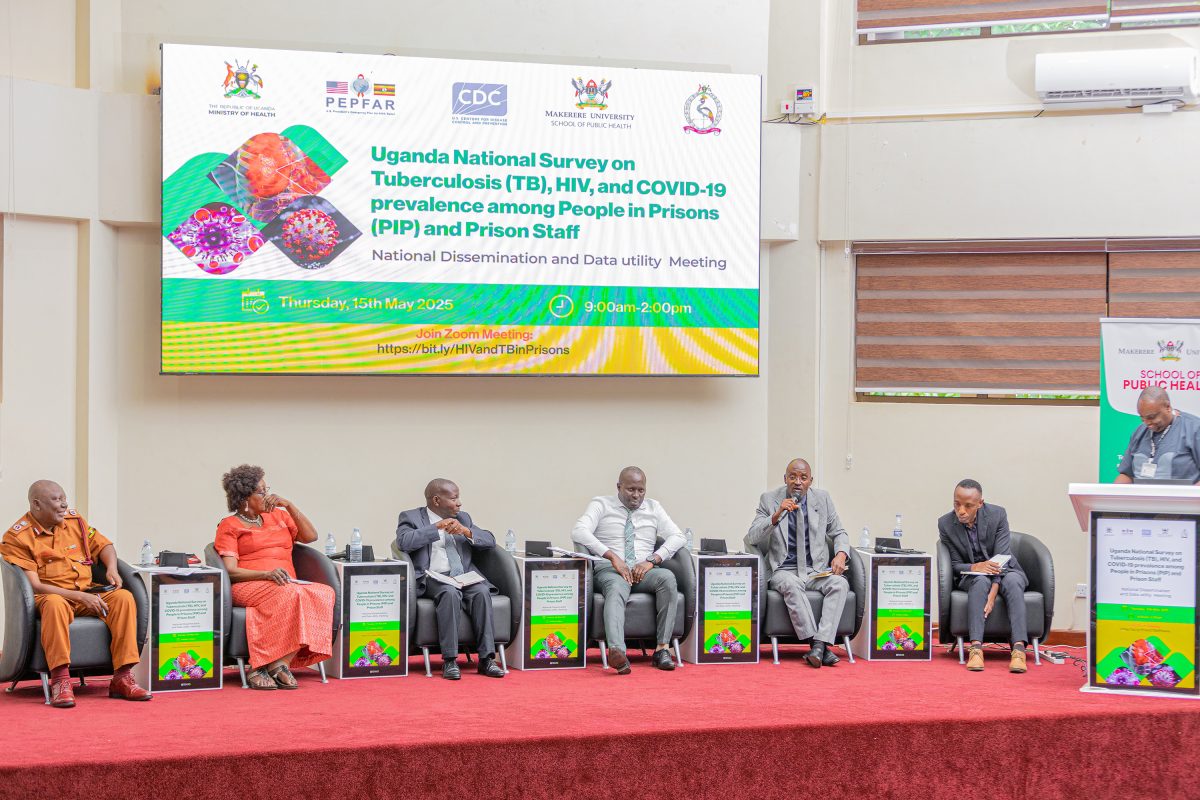L-R:Mr. Samuel Akena, Deputy Commissioner General of Prisons; Dr. Simon Kasasa, the Principal Investigator; Dr. Charles Olaro, Director General of Health Services, MoH; and Professor Rhoda Wanyenze, the Dean, School of Public Health, at the launch of the survey.
Nearly half of Uganda’s prison population has latent tuberculosis (TB), according to the latest Uganda National Prevalence Survey on Tuberculosis, HIV, and COVID-19. The survey, released on May 15, 2025, found that active TB cases in prisons stand at 1,900 per 100,000—eight times higher than in the general population.
The survey was conducted by Makerere University School of Public Health (MakSPH) in conjunction with the Uganda Prisons Services (UPS) and the Ministry of Health—with funding from the U.S. President’s Emergency Plan for AIDS Relief (PEPFAR) and technical support from the U.S. Centers for Disease Control and prevention (CDC)—and purposed to have a more profound understanding of TB to help inform public health programs for this high-risk population.
Dr. Simon Kasasa, a Senior Lecturer at MakSPH and Principal Investigator of this study, stressed that “staying for a longer duration, three years and above, posed a greater risk to TB infection in prison.” He also noted TB infection was much higher among male prisoners (48%) compared to female prisoners (38%) and among those of older age, 65 years and above. Meanwhile, the report noted concerns about excessive numbers in prisons as a key risk factor for TB transmission.

UPS consists of 257 prisons spread over 16 administrative regions with an average prisoner population of 56,400 (95% male), accommodation capacity of 16,612 (340%), and 9,904 staff (29% female).
HIV prevalence among prisoners was also alarmingly high at 11%, twice that of the general population. Notably, female persons in prison (PIP) had the highest HIV rates at 21%, compared to 11% for male PIP and just 2% among prison staff. However, the data also showed a significant drop in overall HIV prevalence within prisons, falling from 15% in 2013 to 11% in 2023, with the most dramatic decline among staff, from 12% to 2%.

Dr. George Tumusinze, a Program Manager and Research Associate, pointed out that although 92% of people with HIV in prisons know their status and 99% are receiving antiretroviral therapy (ART), only 70% have successfully reduced the virus in their bodies, highlighting important issues with how well the treatment is working.

Mr. Samuel Akena, the Deputy Commissioner General of Prisons, echoed these concerns by stating that the survey represents a significant milestone for the Prisons, not only in terms of data collection but also in Uganda’s journey towards achieving equity, justice, and the right to health for all. “This survey is historic. It represents one of the most comprehensive efforts to understand the health status of people in prisons in Uganda.” He emphasized the necessity of a collective and bold response, urging that “the time for piecemeal responses is over.”
Dr. Charles Olaro, Director General of Health Services at the Ministry of Health, emphasized the urgency of the situation, stating, “As we gather today to reflect on the findings of this important survey, we must recognize the urgent need for action in our fight against tuberculosis (TB) in Uganda. Despite our efforts, we are still grappling with the burden of this disease, and our progress toward eliminating it by 2030 has not been as swift as we had hoped.” He pointed out that the survey serves as a critical baseline that will shape future responses and guide resource allocation.

HIV prevalence among prison staff members was the lowest, at just 2%, reflecting a significant achievement in workplace health. Dr. Daniel Byamukama, Head of HIV Prevention at the Uganda AIDS Commission, praised prison authorities for their efforts, noting the remarkable progress over the past decade. In the first survey in 2013, only 34% of HIV-positive staff on treatment had achieved viral load suppression. Today, that figure has reached an impressive 100%, underscoring the impact of sustained prevention and care efforts.
While the prison HIV program has shown effectiveness—evidenced by a drop in prevalence from 15% to 11% among the prisoners over the past decade—Mr. Akena stressed the importance of prioritizing gender-responsive strategies in health interventions.
“Diseases do not recognize bars or borders. They thrive in environments where conditions are poor and resources are scarce. Women in prison face disproportionately higher risks, yet often remain invisible in program planning. This is not acceptable. If we are serious about health equity, we must prioritize gender-responsive strategies — within prison health systems and beyond,” Mr. Akena.

CDC Uganda Director Dr. Adetinuke (Mary) Boyd reinforced the significance of the survey in addressing public health risks. “In Uganda, CDC partners are helping to ensure inmates stay healthy during custody. This work facilitates safe reintegration into their communities, mitigates disease transmission to the general population, and reduces public health risks like untreated TB,” she stated. Dr. Boyd highlighted the role of PEPFAR in tackling critical global health threats, asserting that the survey offers helpful data for enhancing health collaboration within this vulnerable population.
The U.S. CDC has been supporting Uganda Prisons Services to provide comprehensive HIV/AIDS, STI, and TB prevention, care, and treatment services for the last 15 years (2010–2025), totaling over $18,046,263 in investment—including $550,000 to this study alone, through the Makerere University School of Public Health. The program supports capacity building, scale-up, and health system strengthening efforts in HIV/TB testing, care, and support for prisoners and prison staff, plus surrounding communities.

With 80% of prison wards overcrowded and 95% lacking adequate natural ventilation, the conditions in which these individuals live exacerbate the spread of infectious diseases, public health specialists have warned. This survey underlines the urgent need for systemic changes within the prison health system, as well as a commitment to uphold the rights and health of all individuals, regardless of their circumstances.
As Uganda grapples with these alarming statistics, the call to action is clear. Stakeholders must come together to implement effective health interventions, improve screening and treatment protocols, and ensure that the rights of incarcerated individuals are respected. The health of the general population is inextricably linked to the health of those within prison walls, and addressing these challenges is not just a moral imperative but a public health necessity.

Professor Rhoda Wanyenze, one of the investigators and Dean of the School of Public Health, asserts that the Survey findings are a wake-up call for stakeholders to prioritize health equity and justice for society’s most vulnerable members.
Prof. Wanyenze advocated for improved TB screening methods and institutionalization of regular mass TB screening using the WHO-recommended advanced diagnostic tools like digital chest X-rays with Computer-Aided Detection (CAD), as well as molecular diagnostics like GeneXpert and TB LAM, noting that traditional symptom-based screening missed nearly half of TB cases. “The use of molecular diagnostics like GeneXpert significantly improved case detection in our study,” she added, emphasizing the importance of timely diagnosis and treatment.

Uganda Prisons Service, in partnership with the Ministry of Health, has so far installed 14 GeneXpert machines in medium- to high-volume prison health facilities.
While some, including Members of Parliament, have raised concerns about the potential infringement on individual rights through mandatory TB testing in prisons, Dr. James Kisambu, the Commissioner for Prison Health Services, noted that it is now apparent, with these findings, for everyone to appreciate that in such confined settings, the risk of transmission is extraordinarily high. TB testing in these settings is not just a medical practice but also a crucial public health precaution that protects both prisoners and the wider community.
“Prisons are high-risk, high-transmission environments where one undetected case can rapidly escalate into an outbreak. In such settings, the right to refuse testing must be weighed against the right of others to be protected from infection. Mandatory TB screening, when done with dignity and linked to prompt treatment, is not a violation of rights — it is an essential public health measure to protect both people in prison and the communities they return to,” said Dr. James Kisambu.





